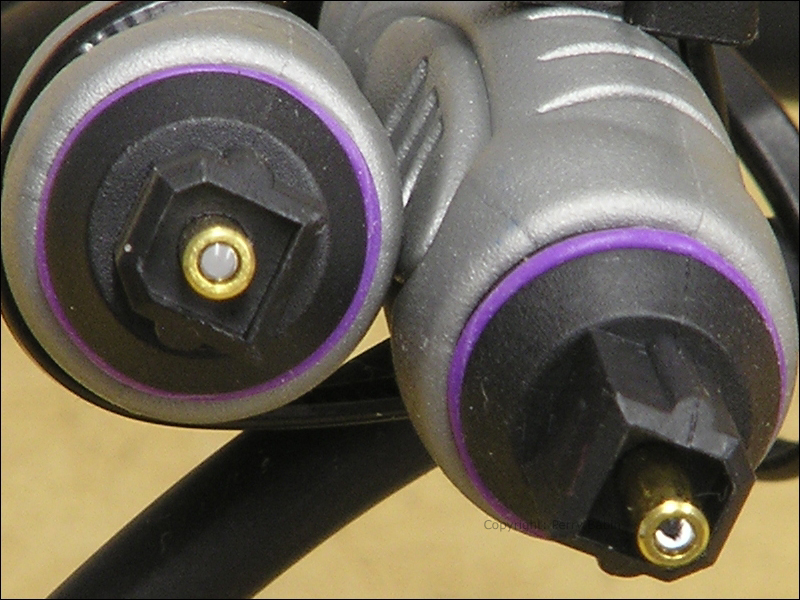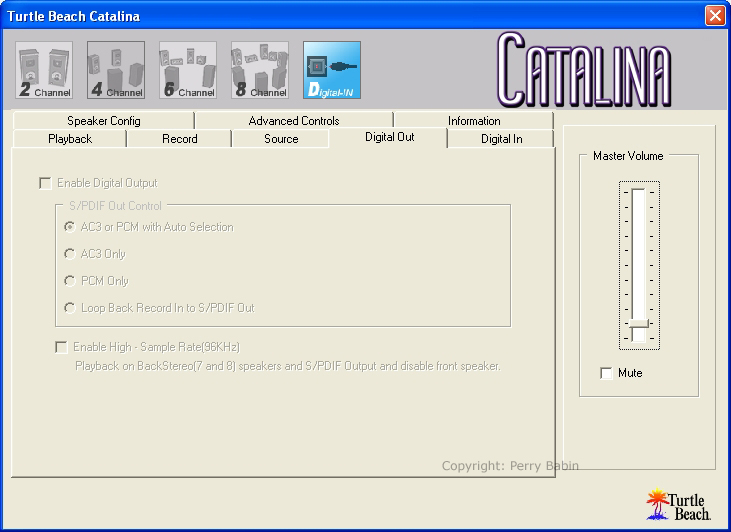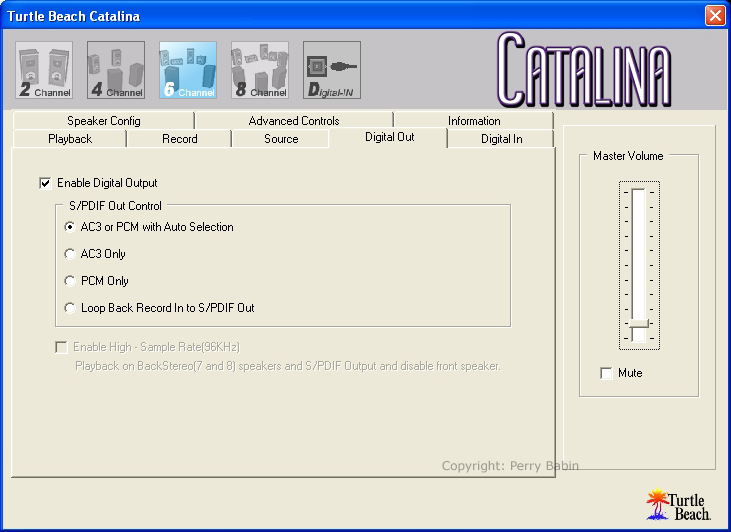|
Using the Optical Input/Output on the Sound Card
|
|
Overview: The image below shows the back of the sound card (again :). You can see a large connector plugged into the optical INput jack (port). Also notice the black plug (plug, as in something that plugs a hole) in the adjacent optical jack. These plugs are used to keep the dirt off of the optical element inside the port. If it gets too dusty, a good optical 'connection' may be difficult to establish. The optical input can take its signal from any piece of audio equipment with a TOSLINK optical output.
 The next image shows the TOSLINK output port (you can see the LED glowing inside the port). The TOSLINK signal is identical to the S/PDIF (Sony/Philips Digital InterFace) except for the fact that it's light based instead of electrical. The panel below is the back of a DVD player (actually a VCR/DVD combo unit). You can see that there is a second digital output. That S/PDIF output uses an RCA type connector and a coaxial cable with metallic (not optical) conductors.
 This is a TOSLINK cable. I'm showing only one end here so you can see the output of the LED (after it has passed through the cable).
 This is a close-up of the connectors. The optical conductor is a piece of fiber optic material. As you can see, the ends are highly polished. The connectors are shipped with a small protective plastic cover. It's used to cover the end of the optical conductor. It's good practice to replace the protective covers when the cable is not in use.
 Below, you can see a close-up of the optical port plug and the plastic protectors for the optical cable.
 Now that I've showed you the components involved, we can get to the sound card's features for the optical connection. I should say now that the sound card has limitations when using the optical cable. These are some of those limitations:

 Now, you can see that we've switched to the six speaker mode and the digital OUTput choices are now available.
 You're probably thinking that the optical input is useless but it does have some uses. For example, you can record a signal from a source like a DAT (Digital audio Tape) machine. The optical connector has no chance of creating a ground loop like a hard-wired metallic connection and therefore will induce no hum. You can listen to audio from any audio source with a TOSLINK output.
|
|
| Contact Me: babin_perry@yahoo.com | |
|
Perry Babin 2005 - Present All Rights Reserved
|